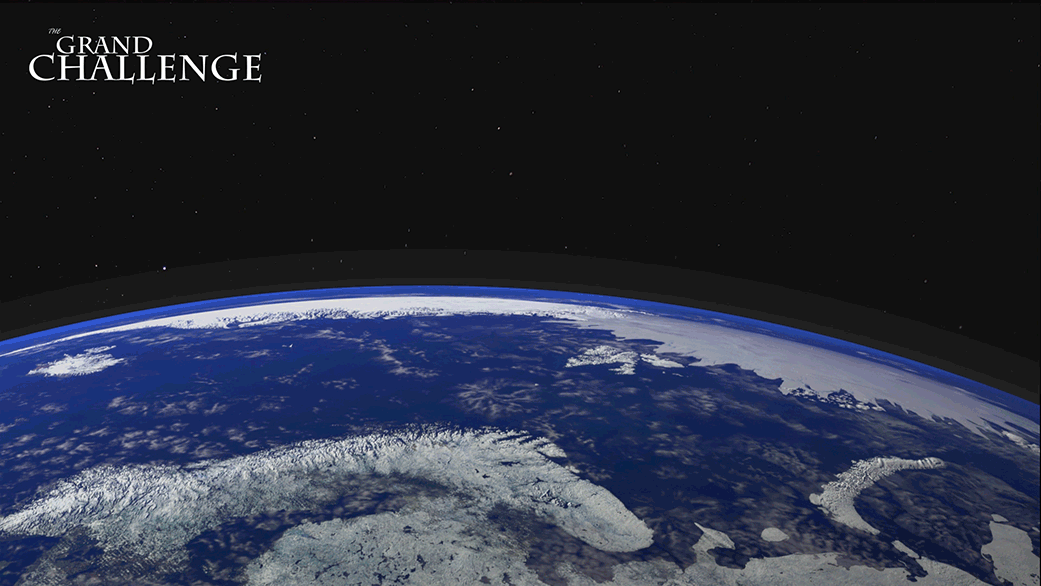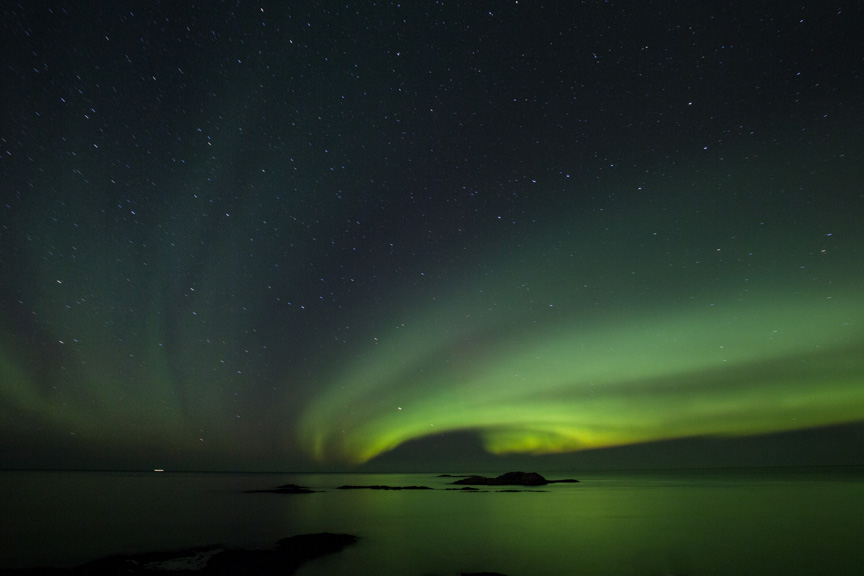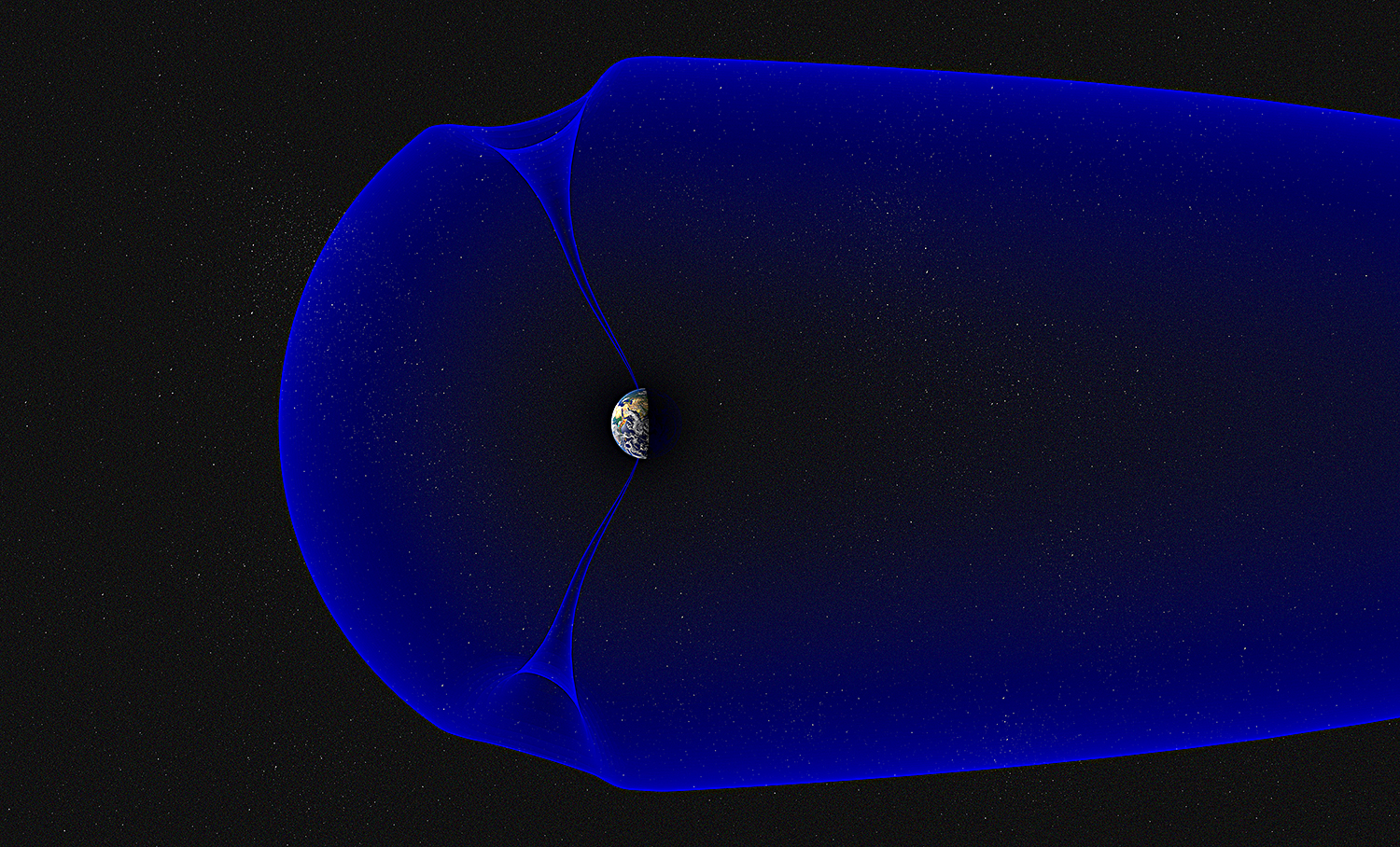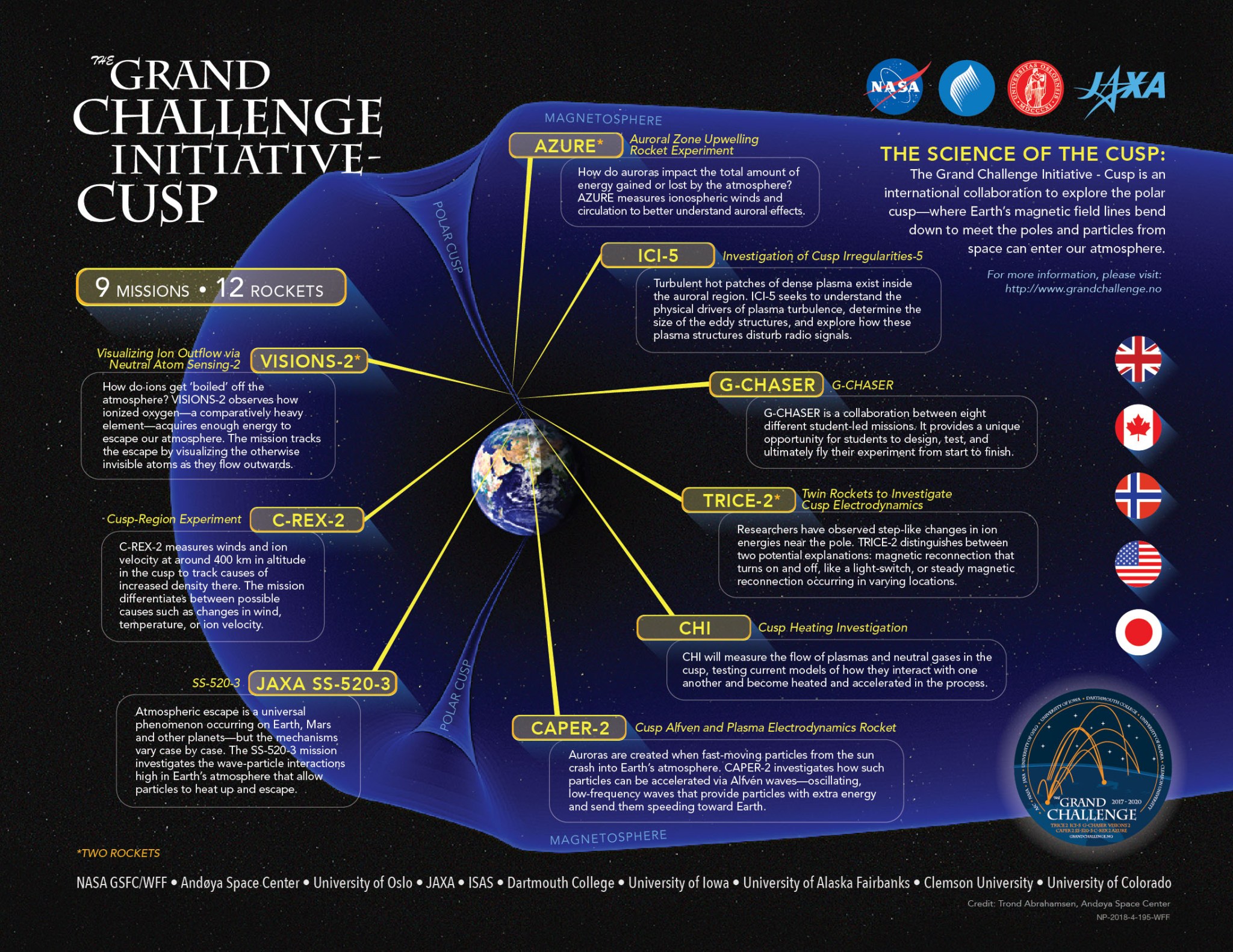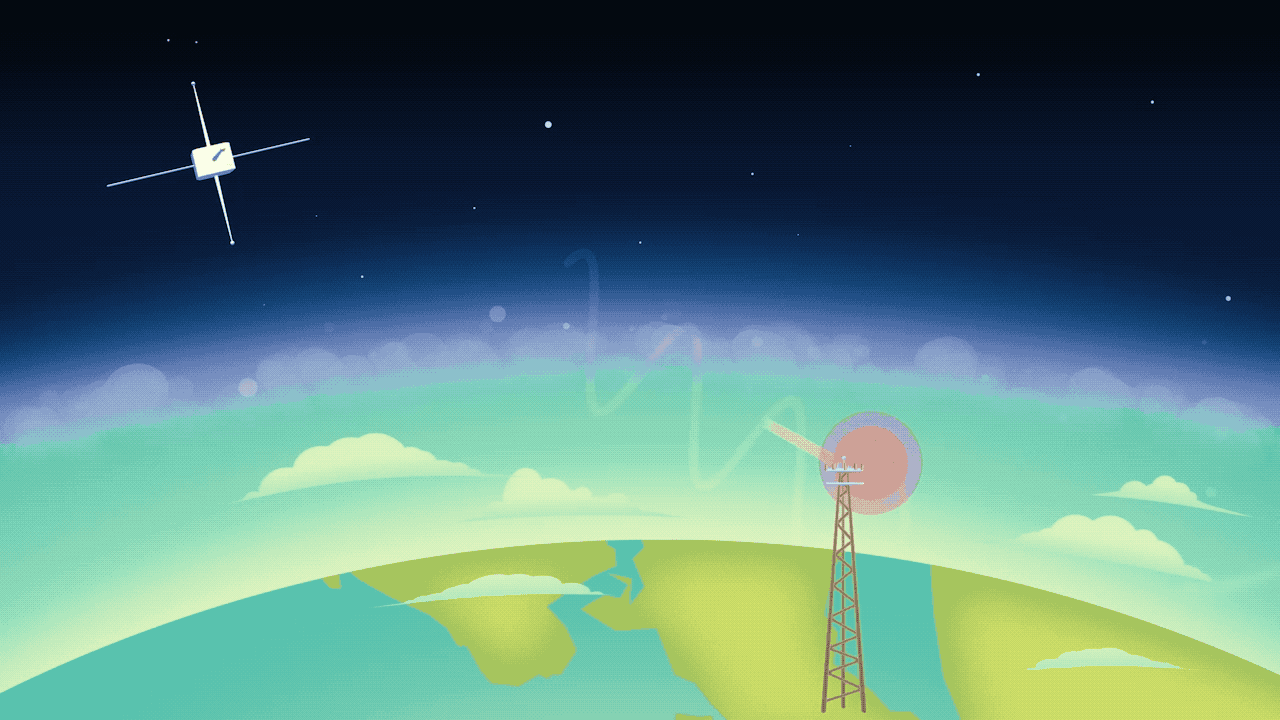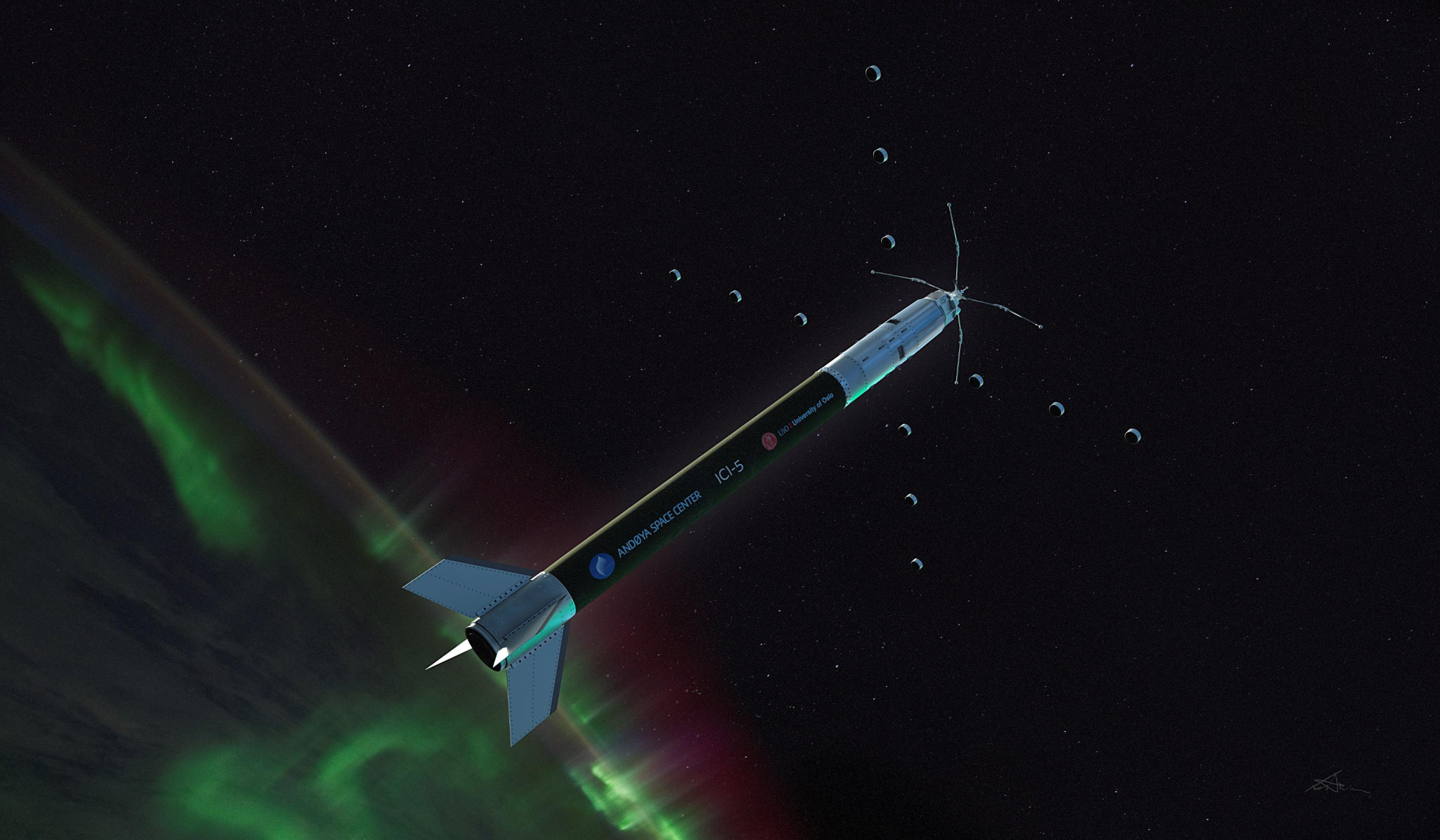Gazing up at the night sky from the edge of the Norwegian sea, you know you’re in an unusual place. The frigid winds stream across an open sky, painted by the dance of the northern lights. Outer space almost seems closer here.
It turns out, that’s not so far from the truth.
This special place is known as the northern polar cusp. It’s one of only two places on Earth where particles from the Sun have direct access to Earth’s atmosphere — and the familiar laws of terrestrial physics can take a strange turn. The cusp is our closest portal to near-Earth space, a region that is increasingly part of the human domain, home not only to astronauts but also communications and GPS signals that can affect those of us on the ground on a daily basis.
Over the next 14 months, NASA scientists will join a group of international researchers to explore the northern polar cusp. Beside the emblems of their respective countries, these researchers will fly a united flag bearing the name of their endeavor: The Grand Challenge Initiative – Cusp, an international collaboration to explore the region where Earth meets space.
Below is a brief overview of the campaign, from the mysteries of the cusp to the cutting-edge missions that will study them.
What is the polar cusp?
Earth is surrounded by a giant magnetic bubble known as a magnetosphere, created by the churning of liquid iron in our planet’s outer core. Our magnetosphere protects us from many of the most dangerous denizens of the space environment, including the hot, electrically charged stream of particles known as the solar wind. Fortunately, our magnetic bubble keeps most of these solar wind particles at bay — but not all.
The polar cusps are essentially two holes in our magnetosphere. Here, Earth’s magnetic field lines funnel the solar wind downwards, concentrating its energy before injecting it into Earth’s atmosphere, where it mixes and collides with particles of Earthly origin.
The cusp stays positioned at local noon — wherever the Sun is directly overhead. As Earth turns, particles are funneled into different regions of the atmosphere like a tube of icing squirted onto a rotating cake. Once a day, the cusp passes right above Andøya Space Center and Ny-Ålesund, Svalbard rocket ranges in Northern Norway — where the Grand Challenge participants begin their investigations.
From these rocket ranges, the scientists of the Grand Challenge will fly sounding rockets — sub-orbital rockets that shoot up into space for a few minutes before falling back to Earth. Sounding rockets can access Earth’s atmosphere between 30 and 800 miles above the surface, the lower end of which is too high for scientific balloons and too low for satellites. Cheaper and faster to develop than large satellite missions, sounding rockets often carry the latest scientific instruments on their first-ever flights, allowing for unmatched speed in the turnaround from design to implementation.
Download Grand Challenge infographic as PDF
Several mysteries of physics lurk within the cusp. Using cutting edge scientific tools, the participants in this Grand Challenge will chart new territory in exploring them.
The aurora
The cusp is the only place where dayside auroras are found — a special version of northern and southern lights, visible when the Sun is out and formed by a different process than the more familiar nighttime aurora. The glimmer of the dayside aurora serves as a ghostly reminder that here, something unearthly is sneaking in.
The dayside aurora will take center stage in the Grand Challenge, but not just for its eye-catching appeal. The more we learn about auroras, the more we understand about the fundamental processes that drive near-Earth space — including those processes that disrupt our technology and endanger our astronauts.
Auroras are the product of a violent collision between speedy charged particles — mostly electrons, but occasionally protons — and atmospheric gases. The process begins with fast-moving electrons, which somehow become accelerated as they fly through the cusp down to Earth. There, they sometimes collide with gases in Earth’s atmosphere, imparting some of their energy and putting them in an excited state. Eventually, those gases relax back to a lower-energy state, releasing a photon in the process that we perceive as the glow of the aurora. The color depends on the type of gas: molecular oxygen producing green, atomic oxygen producing red, and molecular nitrogen blue.
But exactly how do those electrons get moving so fast in the first place? Jim LaBelle, professor of physics and astronomy at Dartmouth College, and principal investigator for the Cusp Alfvén and Plasma Electrodynamics Rocket, or CAPER-2 mission, aims to find out.
“CAPER-2 is all about observing how particles accelerate in space,” said LaBelle. “The aurora presents us with a kind of local laboratory where we can observe these processes close at hand.”
LaBelle and his team will zero in on the role that Alfvén waves — a special kind of low-frequency wave that oscillates along magnetic field lines — play in accelerating auroral electrons. It is a complex dance that requires taking into account both changes in the waves and the particles over time. “The special thing about this rocket is we have a number of instruments that are tuned up to measure charged particles and electric fields together,” LaBelle said. CAPER-2 is set to launch in January 2019.
When the aurora shine, they don’t just emit light — they also release thermal and kinetic energy into the atmosphere. Some of this energy escapes back into space, but some of it stays with us. Which way this balance tips depends, in part, on the winds in the cusp. Understanding this balance of energy is the focus of the Auroral Zone Upwelling Rocket Experiment, or AZURE mission, scheduled to launch in April of 2019.
AZURE will measure the vertical winds that swish energy and particles around within the auroral oval, the larger ring around the pole where the aurora are most common. “The results will be key to a better understanding of how and where the auroral energy is deposited,” said Miguel Larsen, space physicist at Clemson University in Clemson, South Carolina and principal investigator for the mission.
Larsen is also the principal investigator for the Cusp-Heating Investigation, or CHI mission, slated for launch in November-December 2019 from Ny-Ålesund, Svalbard. CHI will use a similar methodology to measure the flow of plasmas and neutral gases in the cusp to test current models of how they interact and become heated and accelerated in the process.
Particles in, particles out
If the cusp is like a funnel, pouring the solar wind into Earth’s atmosphere, then magnetic reconnection is what turns on the faucet. Magnetic reconnection refers to the sudden breaking and rearranging of magnetic field lines, wherein magnetic field tension is transferred into kinetic energy — flinging particles this way and that. When the solar wind — which carries charged particles along like beads strung along its magnetic field lines — impacts Earth’s magnetosphere, it can trigger the explosive process of magnetic reconnection. Solar wind particles then jump the tracks onto Earth’s magnetic field lines, pouring into the cusp.
However, there are some fundamental questions we haven’t yet answered about when and how magnetic reconnection occurs.
“Is it a process that turns on and off? Does it happen in multiple locations simultaneously?” asks Craig Kletzing, space physicist at the University of Iowa in Iowa City and principal investigator for the Twin Rockets to Investigate Cusp Electrodynamics 2, or TRICE-2 mission. Existing data suggests that one or the other of these might be true — but so far, we don’t know which.
In pursuit of an answer, Kletzing will fly two separate rockets through a single magnetic field line in the cusp, one right after the other. If reconnection sputters on and off over time, then the two rockets should get quite different measurements, like noting how it feels to run your finger back and forth under a faucet that is being turned on and off. If instead reconnection happens consistently in multiple locations — like having ten different faucets, all running constantly — then your measurements will be the same whenever you’re in the same location. The results from TRICE-2, scheduled to launch from the Andøya Space Center in Andenes, Norway, in December 2018, will help distinguish between these two prominent models of reconnection and clarify just how particles from the Sun sneak into our magnetic bubble.
But the cusp isn’t just the inroad into our atmosphere — it’s a two-way street. Counteracting this influx of particles from the Sun is a process called atmospheric escape, in which Earthly particles acquire enough energy to escape into space.
“The escape of the ionized atmosphere is a universal phenomenon that occurs not only on Earth but also on Venus, Mars, Mercury and the Moon,” said Yoshifumi Saito, principal investigator for the SS-520-3 mission from the Japan Aerospace and Exploration Agency. “However, the detailed escaping mechanisms are different between different heavenly bodies.”
SS-520-3 will fly 500 miles high over the cusp to take measurements of the electrostatic waves that heat ions up and get them moving fast enough to escape Earth. SS-520-3 is scheduled to launch from Ny-Ålesund, Svalbard in January 2020.
But of all the particles that escape Earth’s atmosphere, there’s one that presents a particular mystery: oxygen.
“We thought for many years that oxygen would be gravitationally bound to Earth,” said Doug Rowland, space physicist at NASA’s Goddard Space Flight Center in Greenbelt, Maryland. At 16 times the mass of hydrogen, oxygen should be too heavy to escape Earth’s gravity. So, if any oxygen were found in near-Earth space, scientists expected it to have come from the Sun, where the searing temperatures would strip from it nearly all of its electrons.
But that’s not what they found. “Instead we find O+, singly ionized oxygen,” said Rowland, which suggests that it came from Earth. “But how does it get up there?”
Rowland will fly the Visualizing Ion Outflow via Neutral Atom Sensing-2, or VISIONS-2 mission, to create maps of the oxygen outflow in the cusp, tracking where these heavy ions are and how they’re moving to provide a hint at how they escape. VISIONS-2 is scheduled to launch from Ny-Ålesund, Svalbard, rocket range in December 2018.
Atmospheric anomalies
The cusp is a place where strange physics happens, producing some anomalies in the physical structure of the atmosphere that can make our technology go haywire.
“During the early 2000s, scientists discovered two substantial and permanent enhancements of atmospheric density” — extra weight, so to speak — “at around 400 km altitude,” said Mark Conde, associate professor of physics at the University of Alaska, Fairbanks, and principal investigator for the Cusp-Region Experiment, or C-REX 2.
For satellites that pass through the cusp, these density increases act like potholes, shaking up their orbits. Scientists don’t currently understand what causes these density increases, but they have some clues.
“This extra weight must be supported by local perturbations in wind, temperature, or ion velocity,” said Conde. C-REX 2, scheduled to launch in November 2019 from the Andøya Space Center, aims to figure out which of these variables is responsible.
Recent research has also discovered mysterious hot patches of turbulent plasma inside the auroral region that rain energetic particles towards Earth. Understanding how and why these hot patches form isn’t just basic science — it’s highly practical.
“Understanding and characterizing the turbulence and their drivers is crucial to forecast severe GPS signal disturbances”, said Jøran Moen, professor of physics at the University of Oslo and principal investigator of the Norwegian Investigation of Cusp Irregularities-5 or ICI-5 mission. Those GPS signals become garbled as they pass through turbulent plasma, affecting so many of today’s technologies that depend on them.
ICI-5 will launch into the cusp to take measurements from inside these hot patches. To measure their structure as several scales, the rocket will eject 12 daughter payloads in concentric squares which will achieve a variety of different separations. ICI-5 is scheduled to launch from Ny-Ålesund, Svalbard, in December 2019.
Rocket training
Sounding rockets programs are touted for their focus on training future scientists, and the Grand Challenge Initiative – Cusp is no exception. One mission, called G-CHASER, is made up entirely of student researchers, many of whom are flying their experiments for the first time.
The mission, led by Principal Investigator Chris Koehler, director of the Colorado Space Grant Consortium at the University of Colorado Boulder, is a collaboration between seven different student-led missions, providing a unique opportunity for students to design, test and ultimately fly their experiment from start to finish.
The students involved in the mission — mostly undergraduates but including some graduate teams — are responsible for all aspects of the mission, from developing the initial idea, to securing the funding, to making sure it passes all the tests before flight.
“Where they really learn what it means to be an engineer or scientist is when they start connecting what they’re learning in courses with what their minds and hands want to do when working with actual hardware,” said Koehler. G-CHASER is scheduled to launch from the Andøya Space Center in January 2019.
The Grand Challenge is a collaboration on a grand scale — and the spirit of collaboration doesn’t end after launch. The data collected will also be shared in a common database on Svalbard, and all researchers will be able to access one another’s data. The researchers have agreed on a standardized format for the data so that all teams can easily compare and share it.
“I want as many as people as possible to analyze the data obtained from the same phenomena so that we can make fast progress,” said Moen.
The Grand Challenge Initiative – Cusp will kick off with the VISIONS-2 (Doug Rowland, principal investigator) and TRICE-2 missions (Craig Kletzing, principal investigator), whose launch windows open Dec. 4, 2018, and Dec. 5, 2018, respectively.
Related:
- NASA Joins International Science Team in Exploring Auroral Cusp from Norway
- NASA Sounding Rockets
- Grand Challenge Initiative – Cusp website
- Grand Challenge Initiative – Cusp graphics
Credit: Andøya Space Center/Trond Abrahamsen
By Miles Hatfield
NASA’s Goddard Space Flight Center, Greenbelt, Md.


























